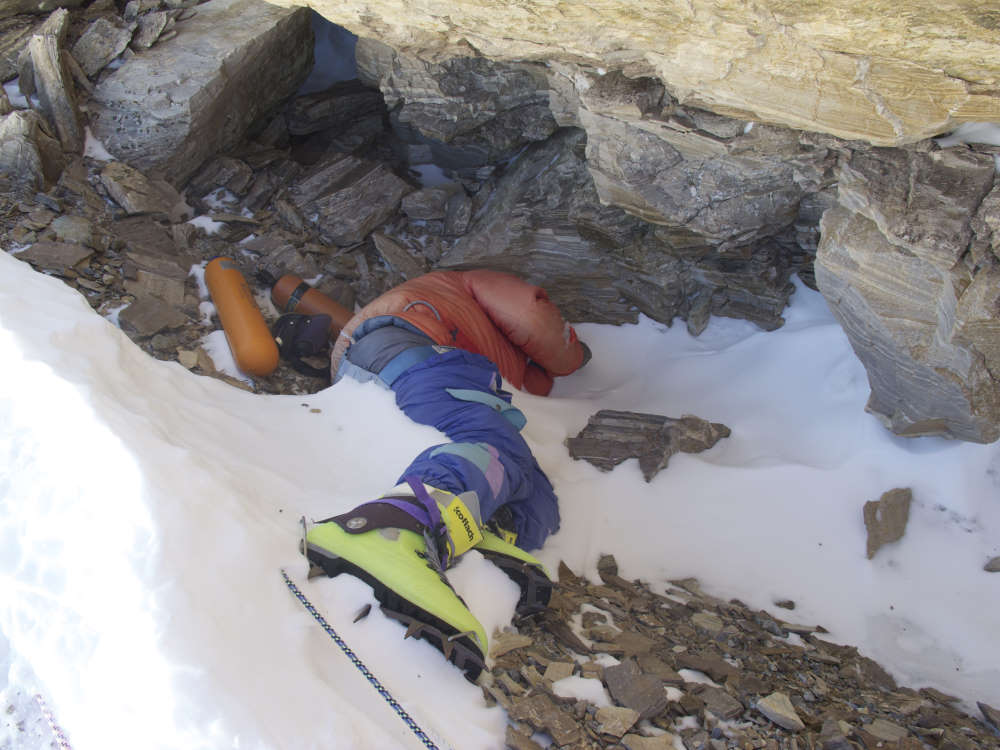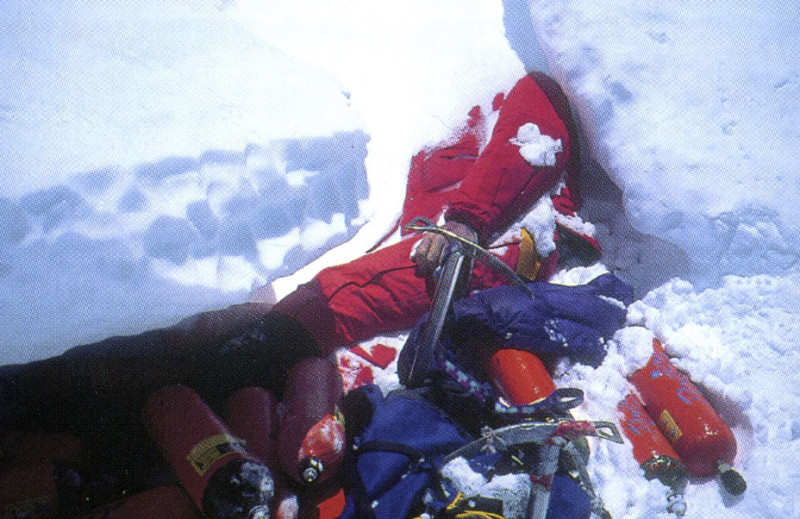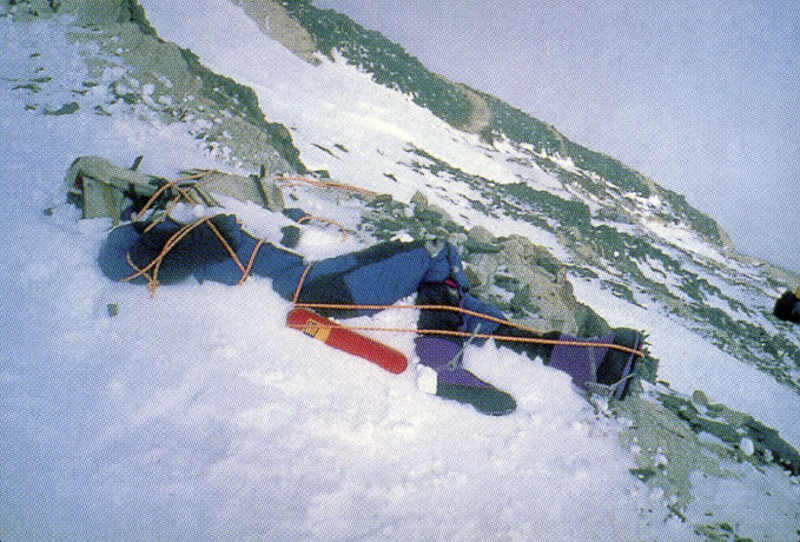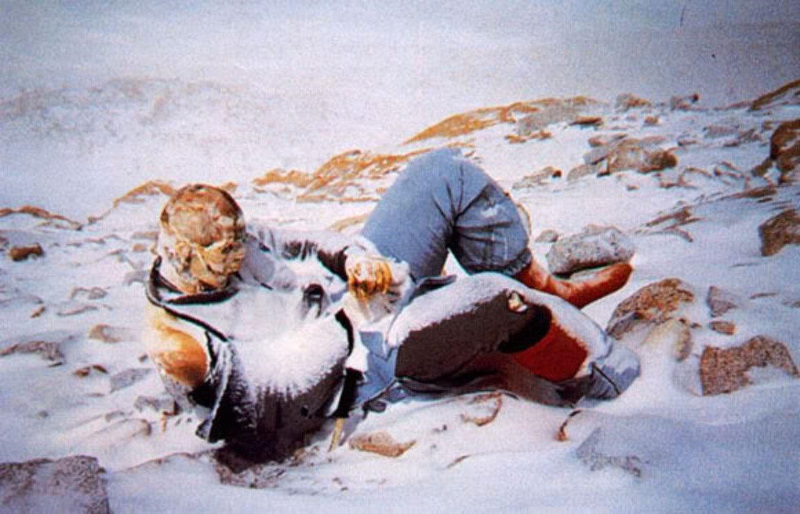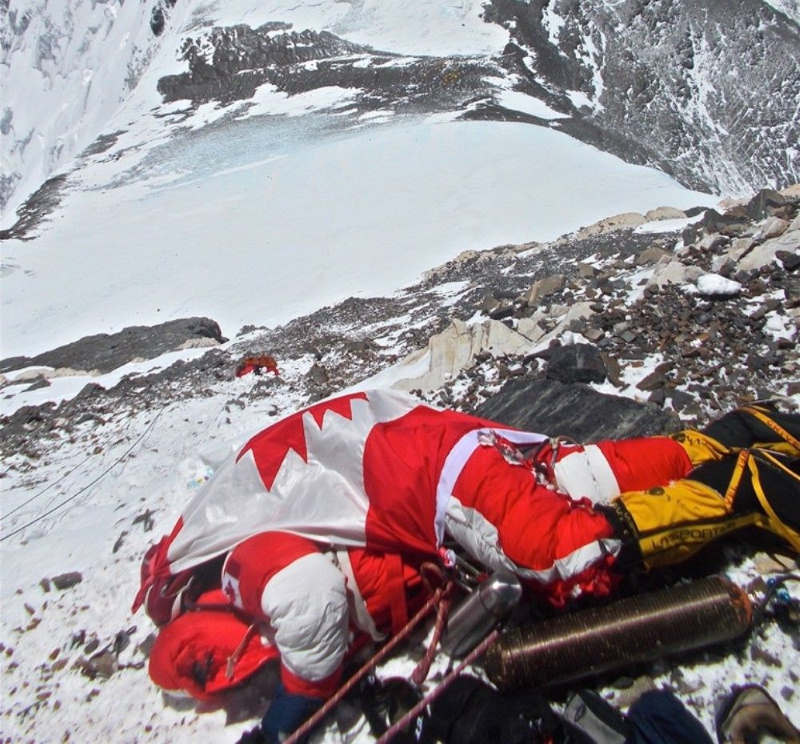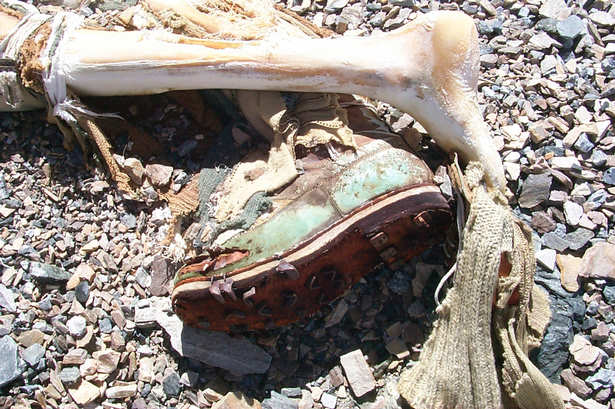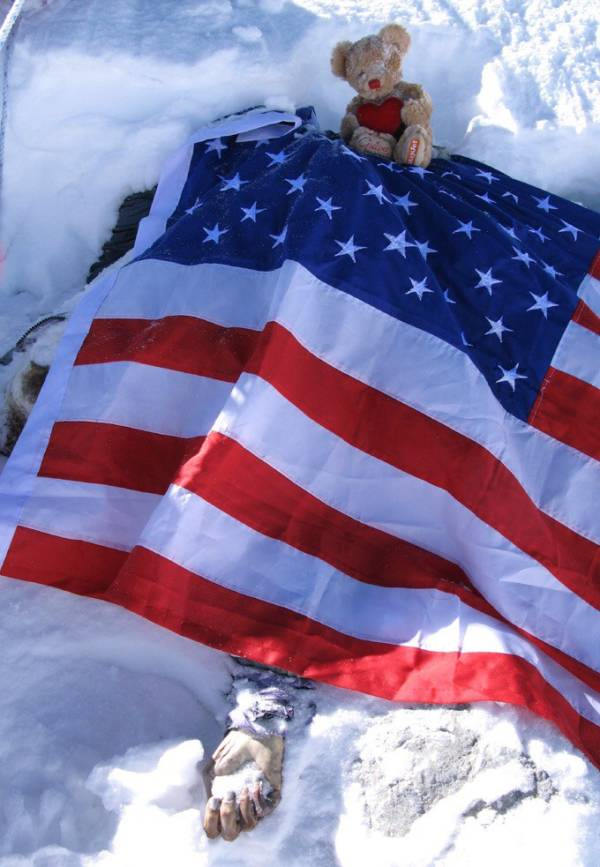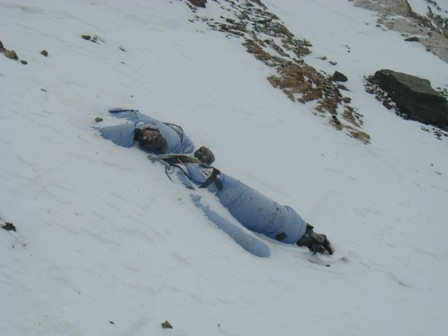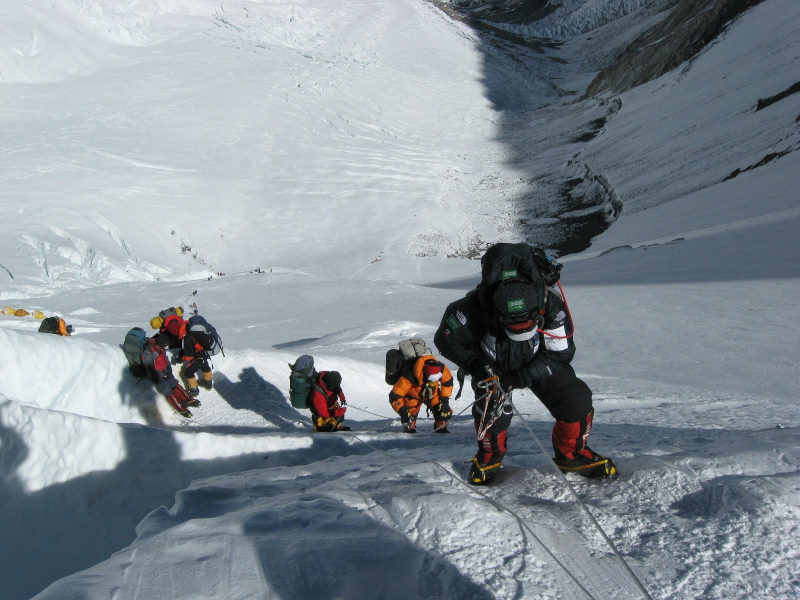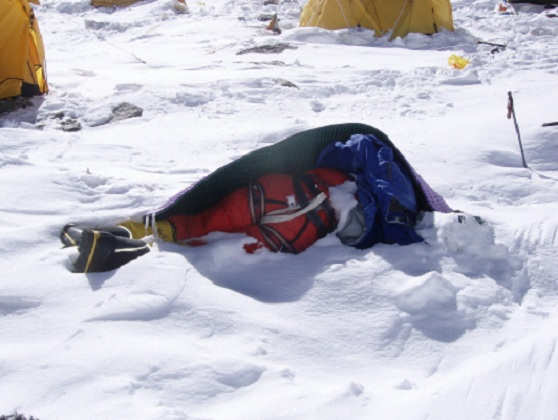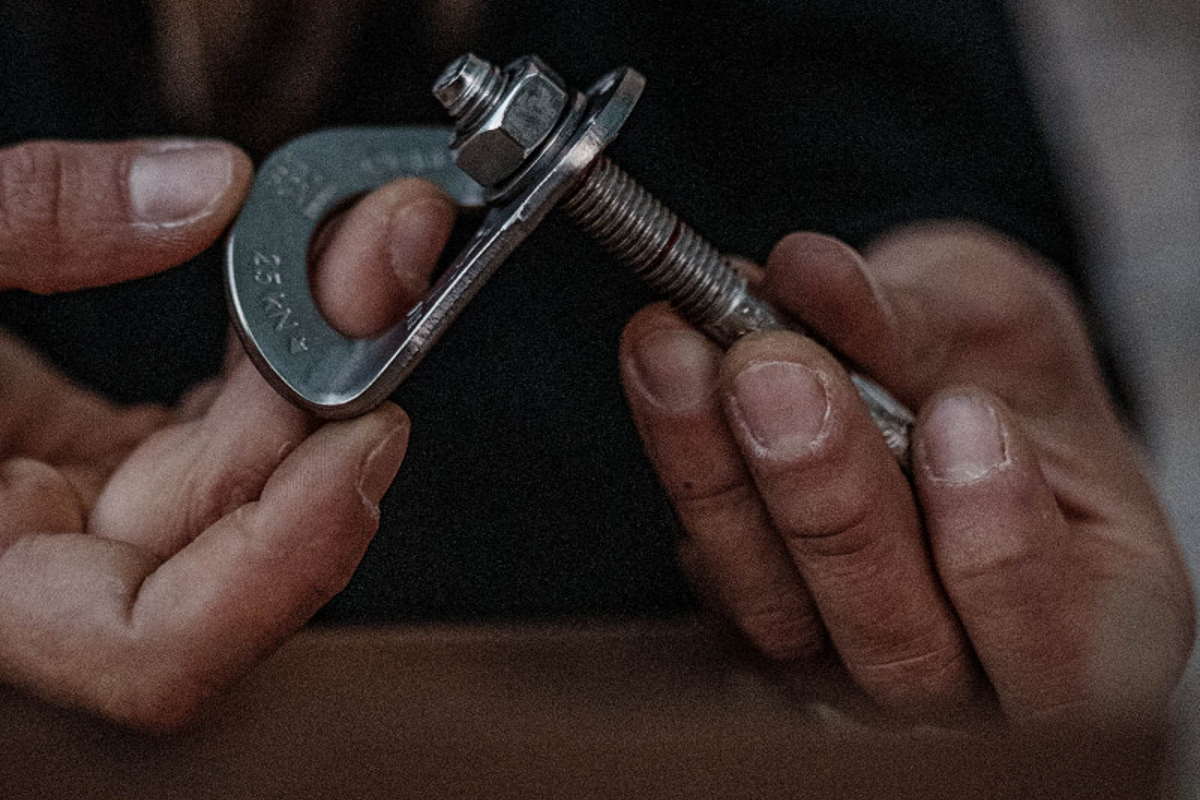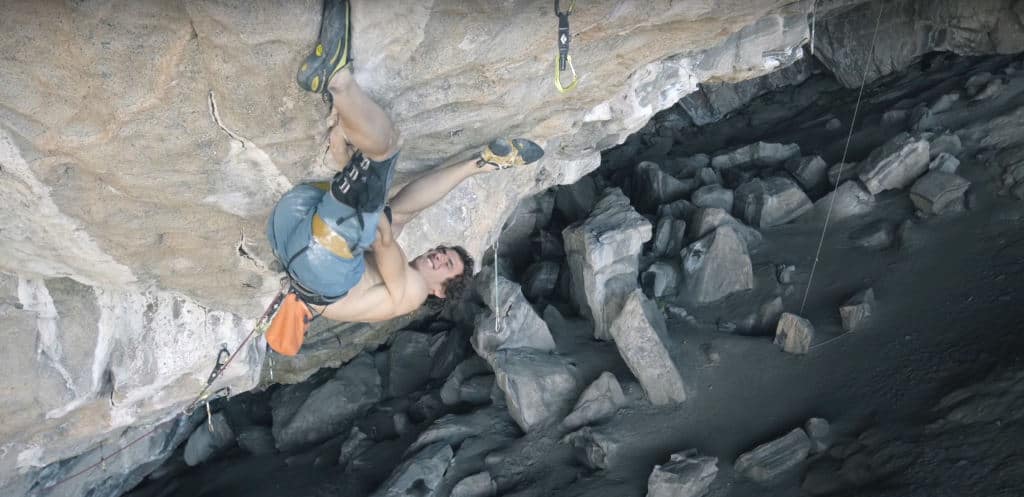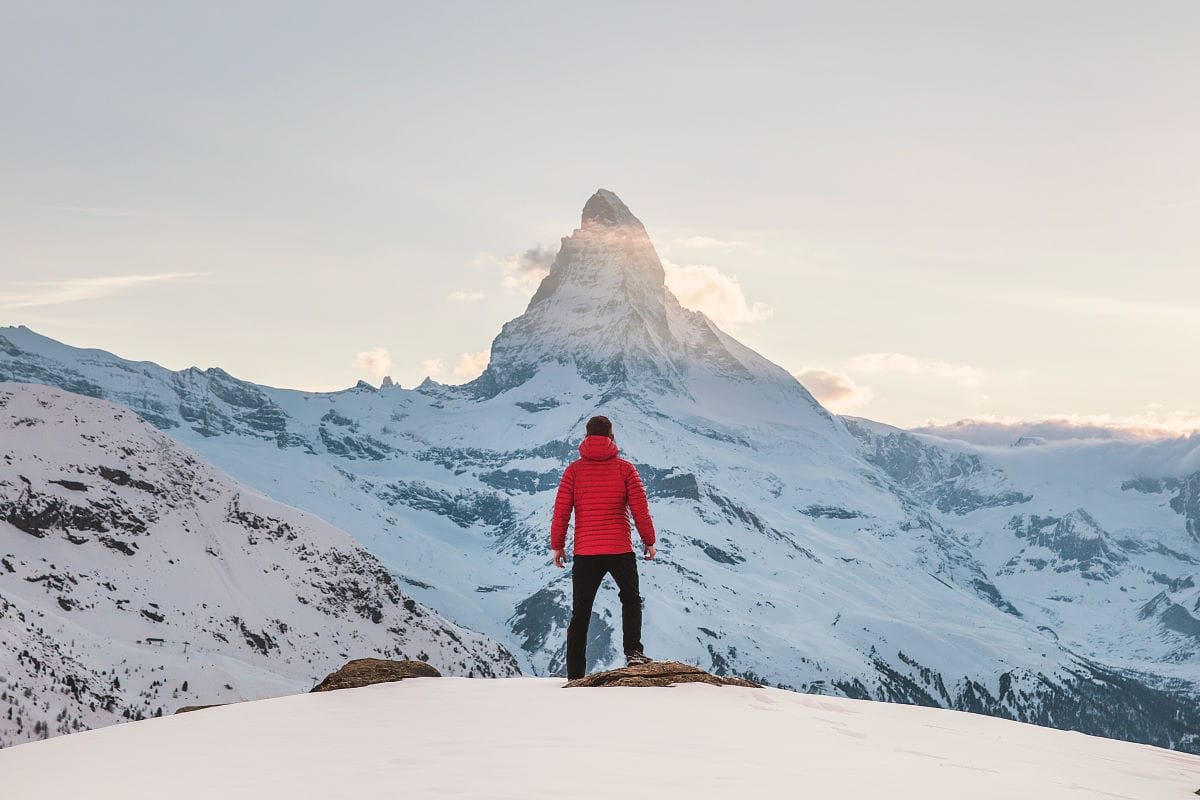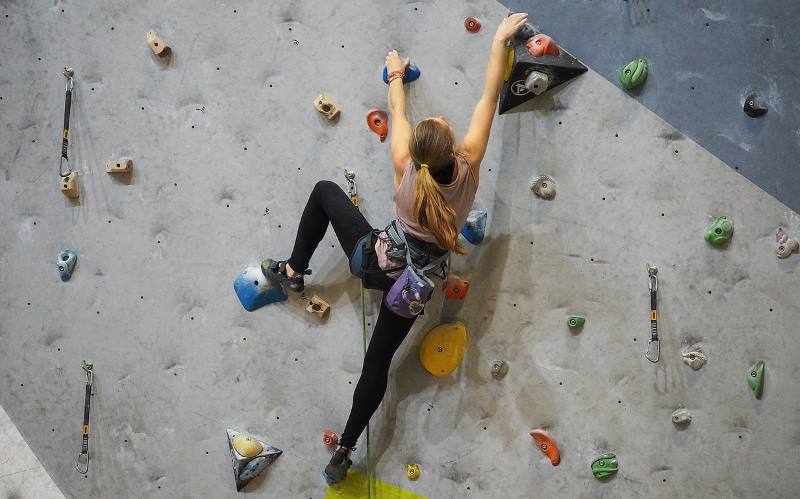Mount Everest has a grim reputation and a terrible record for the most deaths on a mountain. Many have attempted to make the summit though few succeed. Even those that do make the fabled top have no guarantee of getting back down alive.
Why Do People Climb Everest?
Mount Everest is one of only 14 mountains over 8,000 meters above sea level – known as “Eight-thousanders”. Climbing at this level is incredibly strenuous on the body – especially the heart and lungs. Mountaineers must be in peak physical and mental condition to even attempt getting to base camp.
At 8,848.86 meters or 29,0129 feet above sea level Everest is by far the tallest mountain in the world. That means Everest is five and a half miles above sea level. So being able to claim the summit is a newsworthy achievement. The high death rate also seems to attract the type of person who might aim to “cheat death”.
George Mallory was one of the first people to attempt the climb and answered the question fairly succinctly. When asked “Why did you want to climb Everest?” he replied simply: “Because it’s there”. George Mallory’s body was found on the mountain 75 years later.
How Many Dead Bodies Are On Mount Everest?
There are thought to be over 200 bodies left on Mount Everest. No one is entirely sure how many or exactly where many are because of the horrific and unrelenting conditions. That means two-thirds of the people that died on Everest are still there.
- Why Do People Climb Everest?
- How Many Dead Bodies Are On Mount Everest?
- How Many People Have Died Climbing Mount Everest?
- How many People Have Climbed Everest
- Why Aren’t Dead Bodies Removed From Everest?
- Can You See Dead Bodies On Everest?
- Famous Bodies On Mount Everest
- Everest Graveyard – Rainbow Valley
- How Do People Die On Everest?
- Is Mount Everest The Deadliest Mountain In The World?
- Five Highest Mountains In The World
- What Is the “Death Zone” On Everest?
- Why Do So Many Sherpas Die On Everest?
How Many People Have Died Climbing Mount Everest?
As of November 2022, 310 people have died while attempting to climb Mount Everest. The majority of the dead are still on the mountain. Some of the bodies have never been found, some serve as grim “markers” along the route, and some are only exposed years later when the weather changes.
That being said, there are less people dying and more successful summits every year. In 2021 there were only four deaths, and in 2022 there were only two.
How many People Have Climbed Everest
As of November 2022, there have been 11,258 successful summits of Everest – some people have been multiple times so that makes around 6,000 people who have climbed Everest, some multiple times. This info comes from the Himalayan Database.
Though the amount of people that have died on the mountain is large it works out at about a 3% death rate for Everest summits. That means about one in thirty-three summits end in death.
If we go by individuals it means about a 5% death rate. Meaning for every twenty people that have summited Everest one person has died. A pretty chilling statistic.
– How long does it take to climb Mount Everest?
Why Aren’t Dead Bodies Removed From Everest?
It’s simply too hard to remove a dead body from a mountain this harsh. Even the fittest, most experienced mountaineer with the most support and the best equipment isn’t guaranteed to make the top or even get back from a failed attempt.
Bringing back a body requires coordination from a team with very good conditions and can cost from $40,000 to $80,000. Few can afford this, though local authorities will sometimes pay Sherpas to go up and clear some bodies from the route.
Sometimes because of the location of the body, it can be almost impossible to retrieve or would take too long to get out under compacted snow and ice. Some bodies have blown over edges or on rock faces or snow banks and are in areas that have never been seen or walked on.
There have been a few notable attempts and successful recovery of bodies from Everest though. Many believe it is the right thing to do and sometimes relatives, guide companies, or governments have funded the work. The body of Goutam Ghosh is a story of one body that was successfully removed by a team.
Instead of bringing the bodies back down, it is common to either move them out of sight or push them over the side of the mountain. Some climbers specifically wanted their bodies to be left on the mountain if they died. Some attempts to recover bodies on Everest have been blocked by the climber’s family for this reason.
Warning – There are images of dead bodies below.
Can You See Dead Bodies On Everest?
There are quite a few dead bodies in various places along the normal Everest routes. Some have been there for years, some appear only after weather changes and snow deposits moves. Some bodies may only be days old.
In the past few years because of rising temperatures in the area, many older dead bodies have started to re-appear. These are mainly in the Khumbu Icefall. However, more horrifying are the bodies appearing scattered around Camp 4 and just above – where most potential climbers will rest before their big summit push.
This area above 8,000 meters is called the Death Zone and is also known as Everest’s Graveyard.
Lhakpa Sherpa said that she saw seven dead bodies on her latest 2018 summit – one whose hair was still blowing in the wind. Elia Saikaly recalls hundreds of people climbing over the body of a recently deceased climber. Mark Jenkins talks about walking past four newly dead bodies on his descent from the summit in 2013.
Famous Bodies On Mount Everest
Tsewang Paljor – Green Boots
One of the most shocking and well-known images from Mount Everest is of a body that was nicknamed “Green Boots”. The body was previously unidentified but is now believed to be of Tsewang Paljor.
He was an Indian climber who attempted the summit with a team in 1996. He was caught in part of the “Everest Disaster” which saw eight climbers dying on the mountain and some suffering frost-bite – eventually losing fingers.
There had been hold-ups caused by fixed lines not being placed ahead of time at certain points. Then a fast-moving blizzard hit multiple groups on the descent, reducing visibility to almost zero. The books Into Thin Air, The Climb, A Day To Die For, and the film Everest were all based on the event.
Paljor’s body was moved around 2014 along with others. It has been reported that climbers from the Chinese side moved and buried some under rocks or out of sight.
David Sharp
The cave was also where American climber David Sharp would perish. In 2006 Sharp was on a solo trek without a group, Sherpa, or radio. It is believed he had descended after a possible successful summit and on coming down took shelter in the cave near the body.
Some groups making their ascent didn’t see him. One group did see him on their way up but thought he was just resting. On their descent, they found him still in the cave, hypothermic, without oxygen, and suffering from frostbite and frozen limbs.
In the state he was in he was unable to speak or stand. Multiple teams tried to rouse him and help but were unable to. A stronger team of Sherpas tried to help and were able to get him to speak some words. However, he wasn’t able to stand and rescue was impossible.
His body was moved from the cave a year later as requested by the family, though was only removed from visibility. There was a large controversy in the American media over passing a struggling climber – essentially leaving them to die – for a summit.
Rob Hall
Rob Hall and Scott Fischer’s deaths may be the most well-known after their portrayal in the movie Everest. Rob Hall was a guide in his own company Adventure Consultants. In 1996 there were many holds up on a busy day of ascents.
Hall would reach the summit with a few clients and started to descend when he found another client Doug Hansen. Hansen was struggling on his way up and had been told to abandon the attempt by a Sherpa on their team. However, Doug had been on a 1995 expedition with Rob and turned around only 300 meters from the summit – this time he was determined to make the top.
Rob and Doug headed up and did make it to the summit. However, the blizzard of 1996 had started and weather conditions were horrific. Shortly after starting the descent Hall radioed for help as Doug was now unconscious. Another company guide Andy Harris started up with oxygen to help them.
Nearly half a day later Doug Hansen radioed to say Doug Hansen had died and Andy Harris had reached them – but they had lost each other. He died at around 8,690 meters. His body was found just over a week later and is still on the mountain to this day
Scott Fischer
Fischer was another of the main guides on the 1996 attempt that ended in disaster and was featured in the Everest film. He led his Mountain Madness clients to the summit despite the hold-ups and further problems faced. He had also exerted himself in the previous days by descending to help a friend who had fallen ill.
By the time Fischer summited he was suffering from exhaustion. On the descent, he sent a Sherpa ahead to get help instead of staying with him as he knew he’d hold him back. Two Sherpas came back to aid Fischer and another with oxygen but unfortunately couldn’t get him down.
Another guide for Mountain Madness – Anatoli Boukreev – also came up to try and help but found Fischer dead. Boukreev tried to move his body off of the main path and cover him out of respect.
Hannelore Schmatz
In 1979 Hannelore and her husband Gerhard – both very experienced mountaineers – traveled to Everest to attempt a summit. On the final push, they split into two groups with Gerhard leading the first. This group summited and returned successfully to Camp 3.
Hannelore’s group went second though Gerhard had warned them off after seeing the terrible weather conditions. Their group with Hannelore did reach the summit but got into trouble coming back down. Hannelore and another climber Ray Genet were exhausted and wanted to stop and make a shelter.
Despite the Sherpa’s warnings that this could be fatal, they did make a small bivouac. Ray Genet didn’t survive the stop and died in the night. The rest of the group continued down from here and along the way Hannelore succumbed to exhausting, sitting and asking for water.
One of the Sherpas stayed to try and help and suffered frostbite as a result – losing most of his toes and a finger. Hannelore died on the upper slopes of Everest at around 8,300 meters, only 100 meters or so from Camp 4.
Her body remained on Everest for years propped up on her backpack. It served as a very grim reminder of what could go wrong. For a long time, her hair would still blow in the wind. Some climbers mistook her clothing for a tent and would approach, only seeing the reality at the last minute.
Over the years the wind and exposure stripped the body to the skull. In 1984 two members of a Nepalese Police expedition died while attempting to retrieve her body. The body may have been pushed over the side of the North Col by strong winds but may also still be buried under snow.
Shriya Shah-Klorfine
Shriya was a 33-year-old Canadian woman who had been born in Nepal. In 2012 she made the summit successfully but didn’t manage the retreat. 2012 saw 12 people dying on the mountain, which was the worst death rate since the 1996 Everest disaster.
She took pictures and videos at the summit but spent 25 minutes there, using up oxygen. On returning from the summit she succumbed to exhaustion, having been climbing for over 17 hours. She died at over 8,000 meters and her body was draped with a Canadian flag.
Months later her body was removed from the mountain by being brought down to Camp 2, then flown off by Helicopter.
George Mallory
As one of the first few to take part in the original British attempts to summit Everest, George Mallory – and his death – is legendary. He was actually the first person to set foot on Everest itself in the original expedition, which only happened after months of path-finding to even get to the base.
On June 8th, 1924 Mallory was on his third attempt along with Andrew Irvine. The two were the last of a group who had attempted to reach high base camps for an eventual summit.
It is unknown exactly what happened though it is possible that the pair reached the summit. The last sighting of them alive was at roughly 300m from the summit (around 8,550m) – based on Noel Odell’s account from roughly 7,900m.
In 1999 famous mountaineer Conrad Anker found Mallory’s body at around 8,230m just down from the first step, without Irvine. He was with a documentary crew who filmed the historic encounter. The body was identified by a tag with the name George Mallory sewn in.
Based on a fractured leg bone it seemed like he’d taken a fall or slide and become unable to self-rescue. The body in places had been stripped of clothing and skin by high winds and weather, though was otherwise fairly well preserved by the extreme cold.
Francys Arsentiev + Sergei Arsentiev – “Sleeping Beauty”
In 1998 Arsentiev set out to become the first American woman to summit Everest without bottled oxygen. She achieved the incredible feat along with her husband Sergei. Without supplemental oxygen, however, their ascent took longer. By the time they’d started back down the weather had turned.
On their night descent towards Camp 6, Sergei had lost sight of Francys. When he got to camp she wasn’t there, so he made an attempt to go back up and find her – this time with oxygen.
A team from Uzbekistan was attempting a summit and found Francys – still alive but suffering frostbite – only a few hundred meters from the summit. They attempted to help her down, giving her a new tank of oxygen. However, she wasn’t able to stand.
They attached a rope to her and tried pulling her down the slope but had to abandon her to save themselves and go down – abandoning their attempt. On their back, they saw Sergei going up to find her.
Climbers Cathy O’Dowd and Ian Woodall were making a summit attempt the next day when they also found Francys still alive. They had previously shared tea and talked with her and Sergei at base camp and were shocked.
From Cathy’s account the oxygen had run out and the haul rope was still attached but it looked like Francys had removed her gloves and pulled up her sleeves. Sometimes freezing climbers experience the sensation of extreme heat and try to remove clothing.
Francys was still talking – though repeating things – and wasn’t responding or able to stand or move. They attempted to rescue her for over an hour but without her being able to move it wasn’t possible. They too abandoned their attempt and went back down.
Her body remained high on the mountain and well preserved. The name “Sleeping Beauty” was given after Ian Woodall’s description of what she had looked like. Sergei disappeared and wasn’t seen after the Uzbek team saw him going up.
A year later Sergei’s body was found lower down by an expedition that set out to find out if George Mallory and Andrew Irvine were actually the first to summit Everest. It looked like Sergei had taken a fall while going up and died on the mountain. His body remains there.
In 2007 Ian Woodall returned to try and move Francys’ body. He covered her with an American flag, “tucked a teddy bear under her arm.. whispered a personal message to her from her son” and then slipped her body over the edge of the North Face of Everest.
Everest Graveyard – Rainbow Valley
A section of Everest from 8,000 meters and up is known as the Everest Graveyard for the number of bodies littered around the area. It’s also known as Rainbow Valley for the brightly colored mountaineering suits of the bodies.
How Do People Die On Everest?
There any many different causes of death, though a large amount are unknown as the climber disappeared. Altitude sickness that causes the person to not be able to continue is often a leading cause.
Becoming too ill or exhausted to continue means staying in one place and using up all of the available oxygen. Eventually, the person will succumb to the elements and their body will shut down.
A cardiac event – or heart attack – caused by the incredible strain can happen even with very healthy, younger climbers. An avalanche or a fall can lead to being buried under compacted snow. This leads to death by asphyxiation.
Falls + Crevasses On Everest
A crevasse is a hidden crack in the underlying layer of ice. The foundation ice along the journey is buried in snow and if a climber falls in without a guide rope or rescue option they sometimes cannot be retrieved.
The crevasses on Everest are generally very large and out in the open. At certain points, ladders are strapped to the ice with ice screws and climbers must walk over while balancing. A fall without a rope or where a rope fails can lead to broken bones or head injuries and crevasse rescue is very hard.
Going slightly off the path or slipping in certain sections like the Hillary step at the top can lead to long falls or fast slides. Falling in dangerous areas where others can’t follow or it would be impossible to get back from are nearly always fatal.
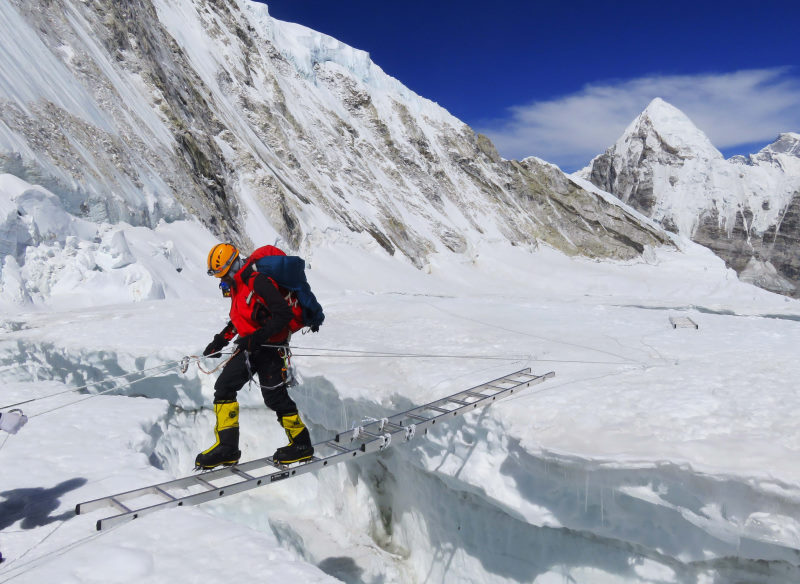
Khumbu Icefall
The Khumbu Icefall is one of the most dangerous parts of attempting Everest and has claimed many lives. Though it is only a short trek from base camp, the ever-changing Icefall is very different from much of the rest of the journey.
The Icefall is a large section of hard, frozen ice blocks that are topped in snow. A fall or slip can leave people trapped between or under the heavy ice. Any avalanche or snow movement from further up the mountain leads to more broken ice and snow cascading down this section.
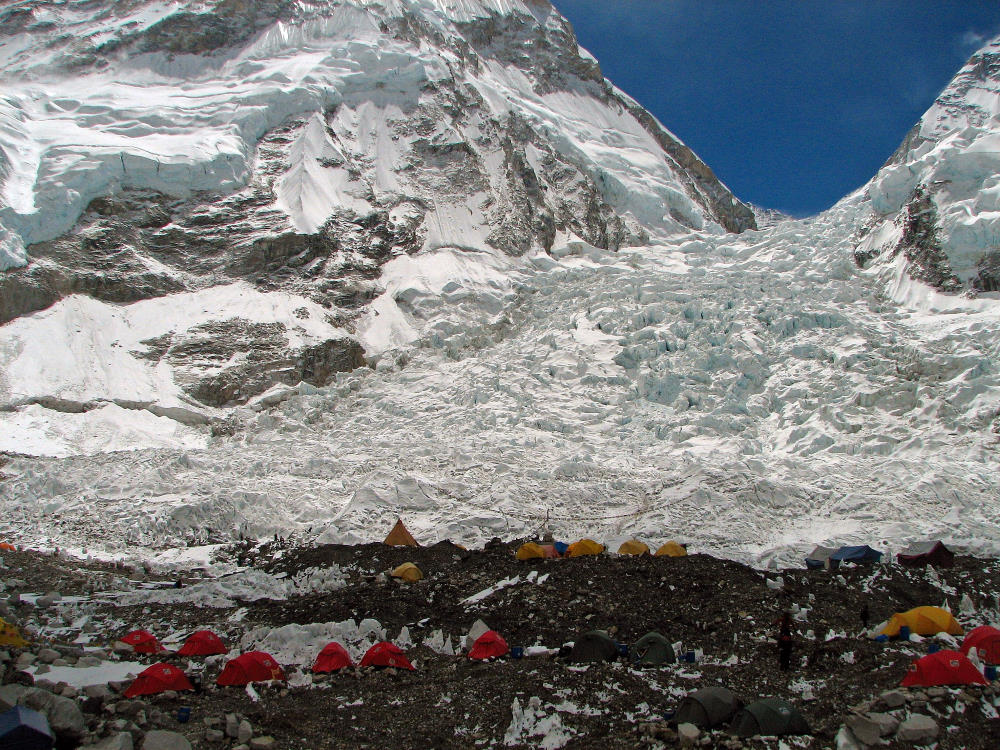
Queues, Exhaustion, Lack Of Oxygen
In recent years queues have been pointed to as a major reason for deaths. After passing the Khumbu Icefall many of the standard routes are done with the aid of fixed lines. This is a rope that has been anchored in place by Sherpas ahead of the paid client’s attempts.
Climbers clip themselves onto the rope with a jumar or hand ascender. These are handheld devices that can be pulled up the rope but won’t go back down. It’s basically a way of hauling your body up with a rope. On steeper sections, two hand ascenders are used at the same time.
The problem is that climbers and guiding companies tend to climb on the same days. Weather windows might last two or three days at maximum over an entire year so the first good day is jumped on. This leads to literal queues as everyone goes as slow as the slowest front-runner.
At some points – like crossing cracks in the ice with ladders or on thin ridges – it’s impossible for more than one person to climb at a time. This leads to people standing still, losing body heat, using up oxygen, and becoming exhausted from lack of oxygen to the brain.
In 2019 many climbers perished partly as a result of using up their oxygen and waiting in queues. This was the busiest year on record, seeing over 820 people on the mountain with more than 200 making the final attempt from Camp 4 to the summit.
Is Mount Everest The Deadliest Mountain In The World?
With over 300 deaths Mount Everest has claimed the most lives of any known eight-thousander. This is mainly because of its popularity as the world’s highest mountain and because of the amount of guiding companies willing to take people.
However, many experienced mountaineers consider K2 or Annapurna the deadliest mountain. K2 is the only eight-thousander to not be climbed in winter (though there is a team considering it right now).
Is K2 Deadlier Than Everest?
K2 is probably the most technical of all mountains and requires more “rock climbing” than the mountaineering style with the use of holds, movement, and equipment. A lot of the big mountaineering peaks are just a hellish slog upwards like a nightmarish hill walk. K2 includes ridges with sheer falls on either side.
The inconsistent weather on K2 causes big problems when deciding when to make an attempt. When conditions change without warning on the route it creates dangerous situations where decisions have to be made on the fly about finding new paths, battling on, or turning back.
As of November 2022, nearly 400 summits have been made of K2. Conversely, there have been 96 deaths. This gives K2 nearly a 24% death rate.
Things seem to be getting better though. In 2022, over 100 people managed to summit K2 – though there were 3 deaths. K2 is normally the most inconsistent mountain, so to get a weather window this big without any ice collapses is almost a miracle
Is Annapurna Deadlier Than Everest?
Annapurna I is the tallest peak of the Annapurna mountain formation. At 8,091 meters or 26,545 feet, it isn’t the highest mountain of the famed peaks.
As of November 2022, there have been around 395 successful summits of Annapurna I. In total there have been 73 deaths on attempts to summit Annapurna I. That’s a staggering 20% death rate. That means one in five people attempting Annapurna I have died.
This doesn’t even include people who had died trekking around the base of the mountain. In 2014 there were 28 deaths as avalanches struck the main hiking routes.
Surprisingly the 2022 season was the most successful on record with 67 summits. This may be a complete anomaly for such a hazardous mountain or could be due to changing weather patterns.
Five Highest Mountains In The World
| Mountain | Height | Where | Total Deaths (November 2022) | First Summit |
| Everest | 8,848.86m | Nepal / Tibet border | 310 | 29th May 1953 – Edmund Hillary / Tenzing Norgay |
| K2 | 8,611m | China / Pakistan border | 96 | 31st July 1954 – Lino Lacedelli / Achille Compagnoni |
| Kangchenjunga | 8,586m | India / Nepal border | 57 | 25th May 1955 – Joe Brown / George Band |
| Lhotse | 8,516m | Tibet / Nepal border | 32 | 18th May 1956 – Ernst Reiss / Fritz Luchsinger |
| Makalu | 8,485m | Nepal / Tibet border | 40 | 15th May 1955 – Lionel Terray / Jean Couzy |
All of these mountains lie in the Himalayas range. The peaks along this long range are a result (in a very simplified form) of the Eurasian and Indian tectonic plates colliding and pushing the earth’s outer crust upwards into a jagged line of mountains.
The range covers around 1,400 miles with Tibet, India, Pakistan, Tibet, and Bhutan all claiming some part.
What Is the “Death Zone” On Everest?
The higher you go up a mountain, the less oxygen is available to you because of less air pressure. In most cities and populated areas around 20% of the air we breathe is made up of Oxygen.
Above 6,000 meters this drops to around 10% and above around 8,000 meters it drops to under 8%. This is not enough oxygen to feed the body. Climbers can acclimatize to lower oxygen levels and there are even communities (like much of Nepal) that regularly live at over 4,000 m.
At around 8,000 meters the body cannot sustain itself or acclimatize. This is called the “death zone” because at this body the body is actively dying of hypoxia. Without supplemental oxygen, it is almost impossible to survive long – though it can be done.
Oxygen deficiency (hypoxia) causes the lungs to work overtime, massive heart rate increases, and blood thickens. Eyesight becomes blurry, with headaches, nausea, and dizziness are almost guaranteed. Apparently, around 32% of climbers that reach 7,500 meters experience hallucinations on their journey.
Altitude sickness occurs when moving to higher altitudes and requires acclimatization in steps to combat. It includes loss of brain function and confusion as well as vomiting. There are studies that say mountaineering actually causes brain damage because of the lack of regular oxygen.
Sometimes at this point climbers suffer from extreme confusion and start to remove clothes. Gloves are commonly thrown off and sometimes climbers expose their skin to the weather. They seem to be experiencing heat from the cold which creates a burning sensation. Death soon follows.
Why Do So Many Sherpas Die On Everest?
One in three of the deaths on Everest is a Sherpa. That statistic is nearly the same for every one of the other 8,000 meter peaks. Sherpas may be strong, but they’re also much much more exposed to danger. Why?
Simply put: for every person that made a summit, there were a handful of Sherpas who did twice as much climbing and work. They not only make the same climbs as the guided climbers but they are expected to help and rescue them if they get into trouble.
That added time and exposure leads them to the same risks as everyone else. On top of that, they often don’t have the latest gear that a rich customer can afford. If you want to learn more, we have a few great Sherpa films listed in our Best Mountaineering Documentaries article.
One of the biggest dangers to Sherpas is the line fixing and setting up of base camps before the main attempt. A typical Sherpa on Everest will arrive at base camp earlier in the season, bringing all the gear to camp. That includes tents, food, tables, chairs, oxygen, climbing gear, and hundreds of meters of rope.
They’ll then do parts of the lower routes, even hitting up to near the top to set up those camps. Line fixing is one of the bigger parts of the job. Essentially they take a massive static rope, then fix it every few meters using pegs or ice screws.
That rope is climbing attach themselves to and haul up Everest with. Setting the rope on Everest (as an example) involves route finding with a rope to use. A fall without a rope can be fatal.
Many Sherpa deaths happen when they have to route find on the Khumbu Icefall. Each year, the Icefall changes and leaves hidden crevasses and unsteady areas. The Sherpas job is to navigate this and find the safest way.
Before it settles and a safe route is found, it’s incredibly dangerous. One of the worst years in Everest history was in 2014 when 16 Sherpas died in an avalanche above the Khumbu Icefall as they were route-finding.
